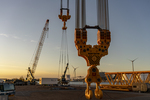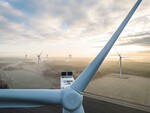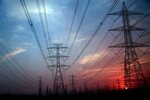News Release from Bloomberg New Energy Finance (BNEF)
Wind Industry Profile of
Storm-Battered US Power Grids Need Intervention Now
In 2022 alone, there were 18 climate–related disasters that caused at least $1 billion in damages. These events occurred throughout the entire year and impacted every region of the US, compelling power providers across the country – from the California Independent System Operator to the Florida Power and Light Company, from PJM Interconnection to the Electric Reliability Council of Texas – to act.
The impact on customers is extreme. On average, power companies can respond to outages and get the lights back on in roughly two hours. During major events, the average duration of an outage increases two– to threefold. Power outage durations are now at an all–time high.
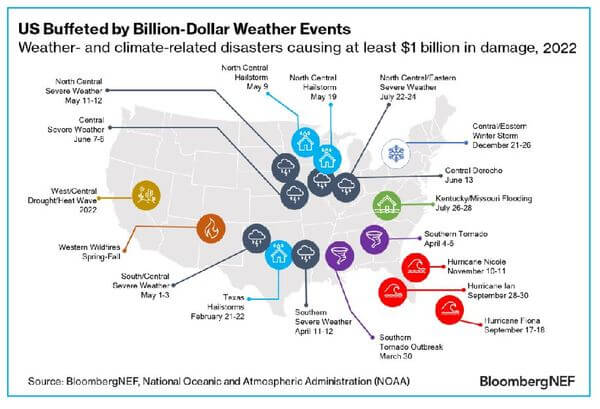
Image: BNEF
At the same time, the need for a stable supply of electricity is also increasing, as homes and businesses electrify more of their operations and appliances.
All eyes have thus turned to power providers, upon whom consumers are relying on to deliver greater grid resilience. While there are many ways to build a resilient power system, three specific and scalable approaches can make a real impact.
Undergrounding makes the system more robust
Undergrounding – the practice of burying power lines rather than stringing them above ground – is among the most common forms of ‘grid hardening’ practiced today. Above–ground power lines are vulnerable to high winds and flying debris, which can snap both wires and poles. Buried power lines, by contrast, are tucked safely underground, far away from the menacing weather.
The cost of undergrounding is considerable, but so is the benefit. When Hurricane Ian – the fifth–strongest storm ever to hit the US and one of the costliest natural disasters in the country’s history – swept through the US Southeast in September 2022, Florida Power and Light found that neighborhoods with underground lines fared significantly better than those with lines above ground.
States across the country are now adopting this practice to help stave off outages from a variety of disasters, including wildfires (California), lightning (Illinois) and ice storms (New York). In 2022, utilities spent a combined $8 billion on undergrounding distribution power lines. Four states saw over half a billion dollars of spend each, while California saw a remarkable $1.2 billion directed toward undergrounding efforts.
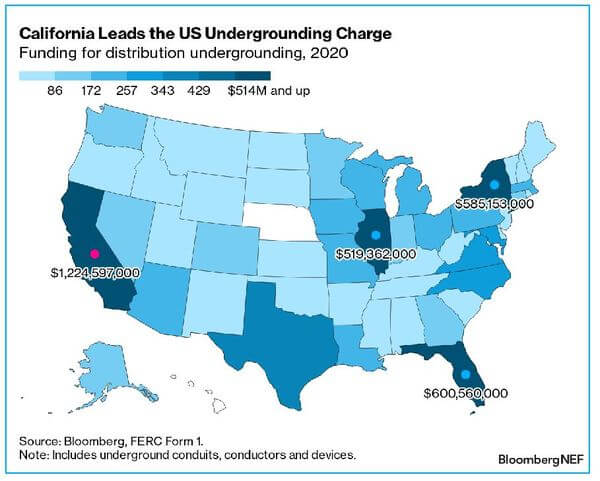
Image: BNEF
Decentralization lessens the impact of blackouts
Sometimes an outage in the main utility power grid is unavoidable – but that doesn’t mean customers have to be left out in the dark. Decentralization allows power from a variety of sources, including customer–generated power, to kick in when the main grid conks out.
For instance, during a heat wave that scorched the Western US in September 2022, California’s utilities drew on consumer resources, such as rooftop solar and residential energy storage, to lessen demand on the main grid and avert a blackout.
When it comes to consumer–generated power, California is exceptionally well positioned. In 2022, California accounted for 17GW – or 31% – of the country’s ‘behind–the–meter’ assets, a volume that BNEF expects to rise to 44GW by 2030. As these resources come online, they will further buffer the grid against overdemand and strain.
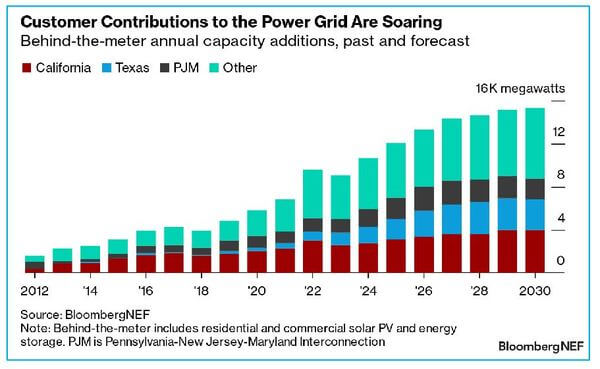
Image: BNEF
Interconnection allows power sharing
When all else fails, power grids can lean on their neighbors. Interconnectors, or high–voltage direct current (HVDC) power lines, connect the electricity grids of adjacent regions, enabling utilities to share power with one another, absorbing strain and reducing impact.
When Winter Storm Uri hit Texas in February 2021, the storm sent temperatures plummeting – which in turn led households to crank up their electric heating. The grid suddenly found itself experiencing summer–level energy demand in midwinter, for which it was disastrously ill–prepared.
Subsequent studies by the Department of Energy found that interconnection could have cushioned the damage. For each gigawatt of power that could have been shared between Texas to the Southeast, $1 billion in damage could have been avoided. Power sharing with other regions could have saved nearly $100 million in damages per gigawatt of interconnection.
Each of these interventions can go a long way toward getting the lights back on quickly – or keeping them from going out in the first place. Yet what truly binds these methods together is that they are all proactive, not reactive. As the frequency and severity of weather events accelerate alongside climate change, resilience will lie in being prepared.
- Source:
- BNEF
- Author:
- Press Office
- Link:
- about.bnef.com/...
- Keywords:
- BNEF, grid, USA, connection, modernization, electricity, renewable energy, blackout, intervention, weather, country, decentralization, interconnection


